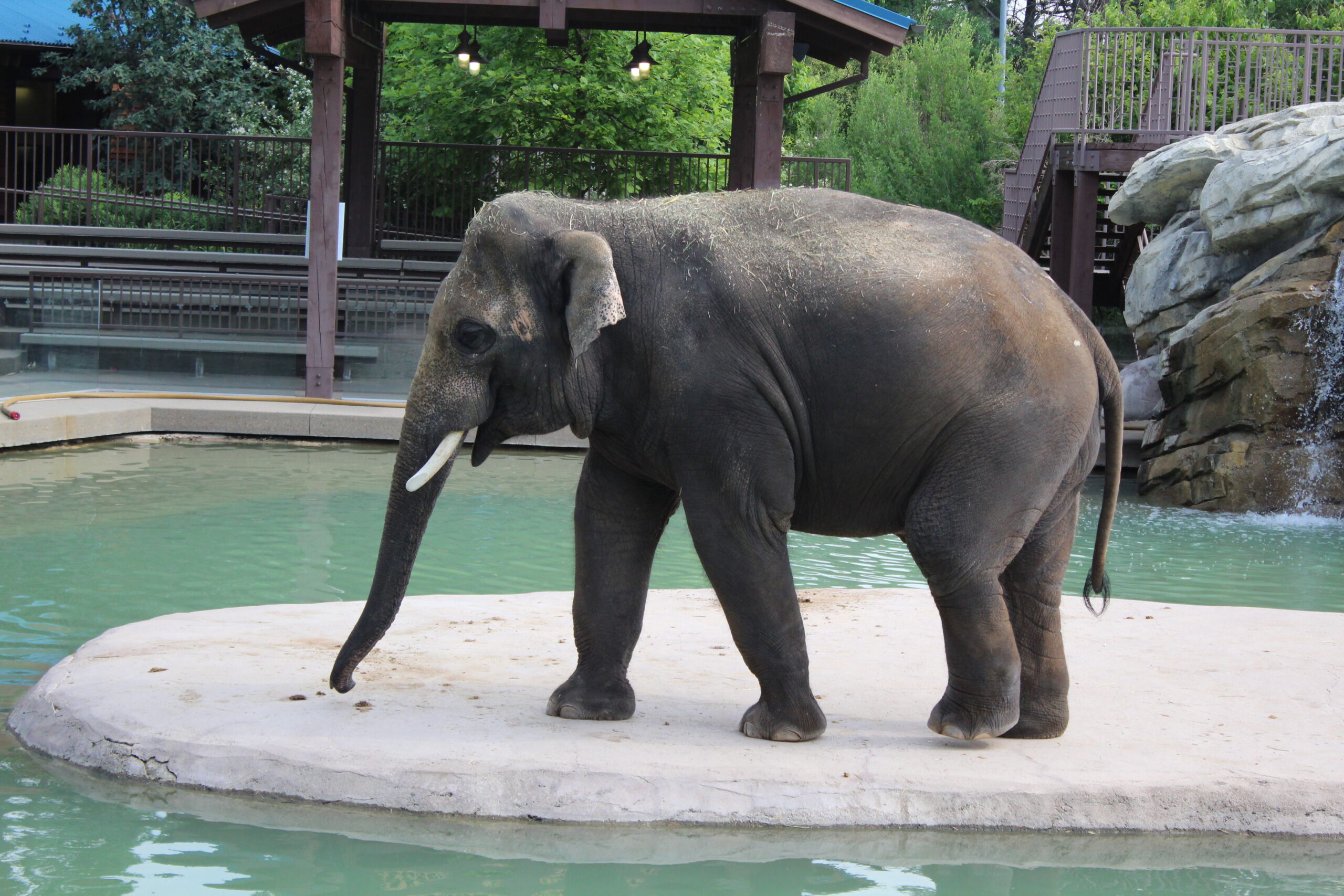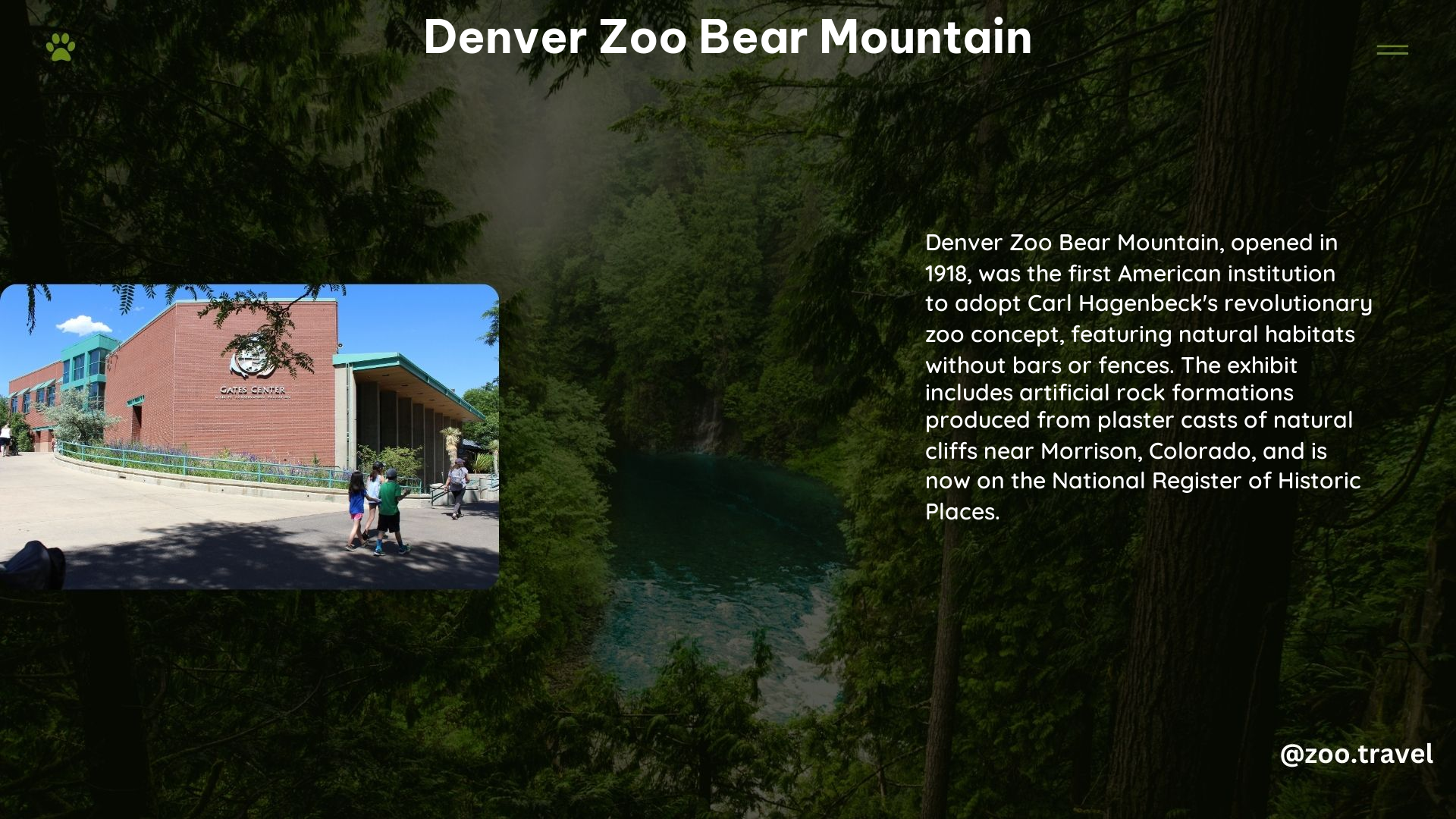Denver Zoo Bear Mountain is a historic and groundbreaking exhibit that has played a significant role in the evolution of zoo design in the United States. As the first naturalistic exhibit of its kind, Bear Mountain set a new standard for zoos, inspiring a nationwide movement towards more natural-looking enclosures.
What was unique about the Bear Mountain exhibition design in American zoos?

The key features that made Bear Mountain unique in American zoos were:
-
Naturalistic Design: Bear Mountain was the first naturalistic exhibit in the United States, replicating rocky outcrops using concrete molds, with multiple units for bears and other mountain-dwelling creatures. This design eliminated bars, providing an unobstructed view for visitors.
-
Immersive Experience: The exhibit was designed to create an immersive experience for visitors, transporting them to a natural mountain environment. The use of concrete molds and careful landscaping created a seamless and realistic habitat.
-
Improved Animal Welfare: The naturalistic design of Bear Mountain was also a significant step forward in animal welfare. By providing a more natural and spacious environment, the exhibit aimed to improve the quality of life for the bears and other animals housed there.
When did Bear Mountain open to the public at the Denver Zoo?

Bear Mountain opened to the public in 1918, marking a significant milestone in the history of the Denver Zoo and the evolution of zoo design in the United States. This exhibit was part of Denver Mayor Robert Speer’s City Beautiful campaign, which aimed to transform the city into a more aesthetically pleasing and livable urban environment.
What is the significance of Bear Mountain in the history of the Denver Zoo?
Bear Mountain’s significance in the history of the Denver Zoo cannot be overstated. It was a pioneering exhibit that set a new standard for zoos across the country, inspiring a nationwide movement towards more natural-looking enclosures. Some key points about the significance of Bear Mountain:
-
Groundbreaking Design: Bear Mountain was the first naturalistic exhibit in the United States, a significant departure from the traditional barred enclosures that were common in zoos at the time.
-
Historic Landmark: The original Bear Mountain exhibit is still intact and has been recognized as a historic landmark, being placed on the National Register of Historic Places.
-
Inspiration for Change: Bear Mountain’s success and popularity inspired other zoos to adopt similar naturalistic designs, leading to a nationwide shift in zoo design and animal welfare practices.
-
Continued Evolution: While the original Bear Mountain exhibit is no longer considered state-of-the-art for bear habitats, the Denver Zoo has continued to evolve, with new exhibits like Harmony Hill providing improved spaces for bears and other animals.
Additional Details
Construction
The construction of Bear Mountain began in 1917, with workers taking plaster casts of natural cliffs near Morrison, Colorado, to create the artificial rock formations. This meticulous process ensured that the exhibit would have a realistic and natural appearance.
Cost
The Bear Mountain exhibit cost $50,000 to construct, a significant investment at the time. This made it the most expensive project undertaken by the Denver Zoo until then, underscoring the importance and ambition of the exhibit.
Impact
Bear Mountain quickly became the main attraction at the Denver Zoo, placing it among the most advanced zoos in the United States at the time. The exhibit’s popularity and success helped to cement the Denver Zoo’s reputation as a leader in the field of zoo design and animal welfare.
Current Status
While the original Bear Mountain exhibit is no longer considered state-of-the-art for bear habitats, it remains an important part of the Denver Zoo’s history and legacy. The zoo has continued to evolve, with new exhibits like Harmony Hill providing improved spaces for bears and other animals.
The original Bear Mountain is still intact and on the National Register of Historic Places, recognizing its significance in the evolution of zoo design. The exhibit continues to be a popular attraction for visitors, offering a glimpse into the past and the pioneering efforts that shaped the modern zoo experience.
References:
– Colorado Encyclopedia: Denver Zoo
– Denver Zoo: History
– 5280: How Denver Zoo’s Bear Mountain Exhibit Revolutionized Animal Care
– YouTube: Denver Zoo Bear Mountain
